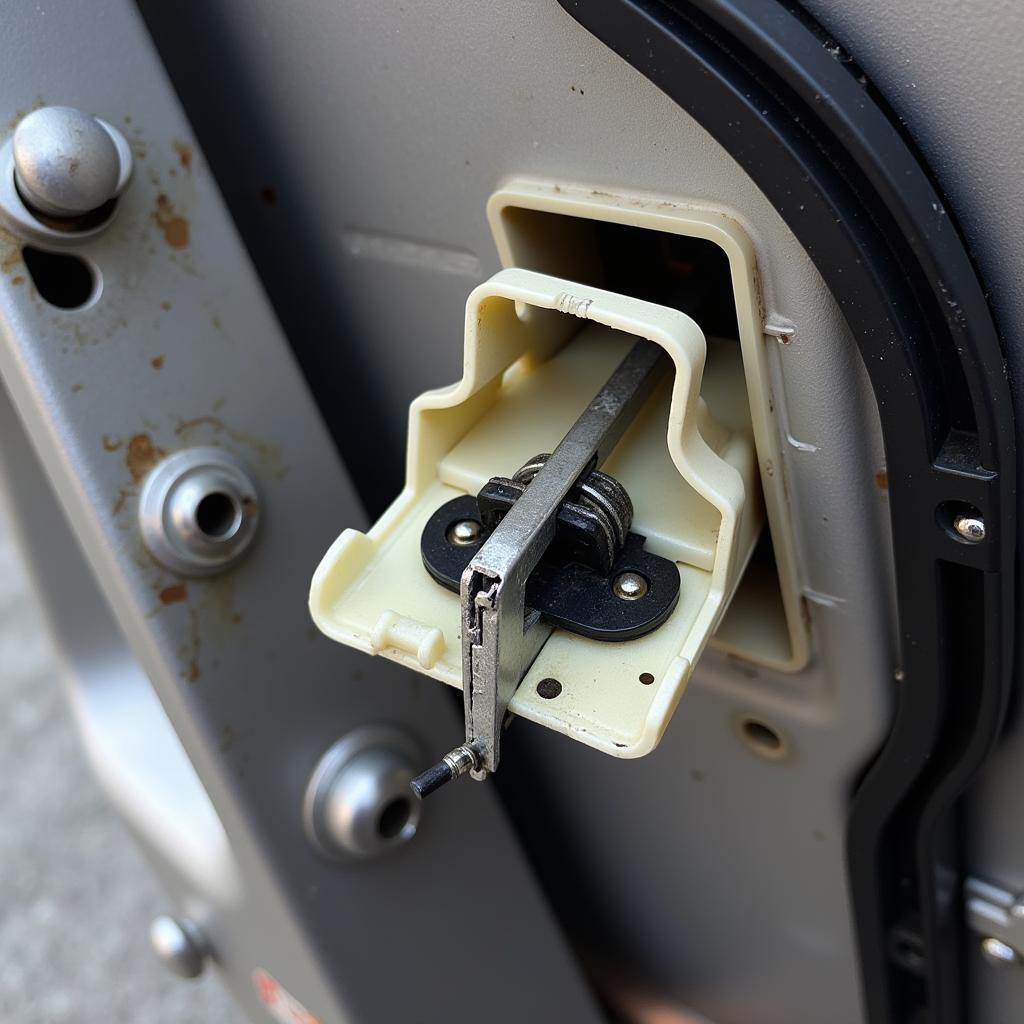Fixing holes in your car tarp is crucial for protecting your vehicle from the elements. Whether it’s a small tear or a large rip, a damaged tarp can compromise its effectiveness, leaving your car vulnerable to sun, rain, snow, and debris. This guide will provide you with practical solutions and step-by-step instructions on how to effectively repair various types of tarp damage, ensuring your car remains well-protected.
Identifying the Damage and Choosing the Right Repair Method
Before you begin Fixing Holes In Car Tarp, assess the extent of the damage. A small puncture requires a different approach than a large tear. Consider the material of your tarp as well; some repair methods work better on certain materials than others.
Patching Small Holes and Tears
For minor damage like small punctures or tears, a simple patch is often sufficient. Here are a few effective patching methods:
- Adhesive Patches: These are readily available and easy to apply. Simply clean the area around the hole, peel off the backing, and firmly press the patch onto the tarp.
- DIY Patches: Cut a piece of tarp material or heavy-duty fabric slightly larger than the hole. Apply a strong adhesive like seam sealer or tarp tape to the edges of the patch and press it firmly over the hole.
Repairing Large Tears and Rips
Larger tears and rips require more robust repair methods. Consider these options:
- Stitching: If you’re comfortable with sewing, stitching can provide a strong and durable repair. Use heavy-duty thread and a needle designed for canvas or other thick materials. Reinforce the stitched area with tarp tape for added strength.
- Tarp Tape: For a quick and easy fix, use high-quality tarp tape. Clean the area around the tear, ensuring it’s dry. Apply the tape firmly over the entire length of the tear, extending a few inches beyond each end. Overlap multiple strips if necessary.
Preventing Future Damage: Prolonging the Life of Your Car Tarp
Fixing holes is important, but preventing them in the first place is even better. Here are some tips to prolong the life of your car tarp:
- Proper Storage: When not in use, fold and store your tarp in a dry, cool place away from direct sunlight.
- Secure Fastening: Ensure your tarp is securely fastened to your vehicle to prevent it from flapping in the wind, which can cause stress and tearing.
- Regular Cleaning: Remove dirt, debris, and bird droppings regularly to prevent them from weakening the tarp material.
- Avoid Sharp Objects: Be mindful of sharp objects that could puncture or tear your tarp, such as branches, tools, or sharp edges on your vehicle.
Choosing the Right Tarp Material
The type of tarp material also plays a significant role in its durability and resistance to damage. Consider these common tarp materials:
- Polyethylene: A lightweight and affordable option, but less resistant to tearing.
- Polypropylene: More durable than polyethylene and offers better UV resistance.
- Canvas: A heavy-duty option that is highly resistant to tears and punctures, but can be more expensive.
- Vinyl: A strong and waterproof material, suitable for harsh weather conditions.
“Choosing the right tarp material from the outset can significantly reduce the need for repairs,” says John Davis, a seasoned automotive technician with over 20 years of experience. “Investing in a high-quality tarp might seem expensive initially, but it can save you money and hassle in the long run.”
Conclusion
Fixing holes in your car tarp is a manageable task with the right approach. By choosing the appropriate repair method and following the steps outlined above, you can extend the life of your tarp and ensure your car remains protected. Remember, prevention is key, so take measures to protect your tarp from damage in the first place. For further assistance or if you’re facing complex tarp issues, feel free to reach out to us at AutoTipPro at +1 (641) 206-8880 or visit our office at 500 N St Mary’s St, San Antonio, TX 78205, United States.
“A well-maintained tarp is an essential investment for any car owner,” adds Sarah Miller, an automotive expert specializing in vehicle protection. “Taking the time to repair even minor damage can significantly extend its lifespan and prevent more costly repairs down the line.”
“Remember, a stitch in time saves nine,” says David Lee, a veteran mechanic specializing in automotive maintenance. “Addressing small tears promptly can prevent them from becoming larger, more difficult-to-repair problems.”
FAQ
-
What is the best way to clean a car tarp? Use mild soap and water with a soft brush or sponge. Avoid harsh chemicals or abrasive cleaners.
-
Can I use duct tape to fix a hole in my car tarp? While duct tape might provide a temporary fix, it’s not recommended for long-term repairs. Tarp tape or a proper patch will offer a more durable solution.
-
How do I store my car tarp to prevent mildew? Ensure the tarp is completely dry before folding and storing it in a cool, dry place.
-
What is the most durable type of car tarp material? Canvas and vinyl are generally considered the most durable options.
-
How often should I inspect my car tarp for damage? It’s a good idea to inspect your tarp at least once a month, or more frequently if it’s exposed to harsh weather conditions.
-
Can I paint over a patched area on my car tarp? It’s not recommended to paint over patched areas, as the paint may not adhere properly and could crack or peel over time.
-
What type of adhesive is best for patching a car tarp? Seam sealer or tarp adhesive specifically designed for outdoor fabrics are recommended.





Leave a Reply